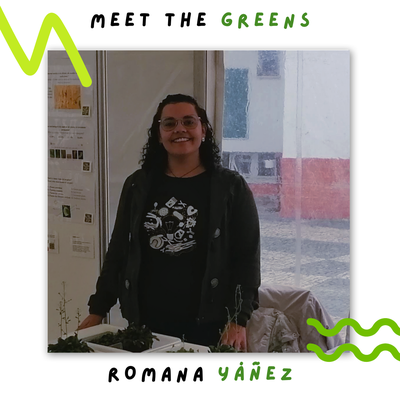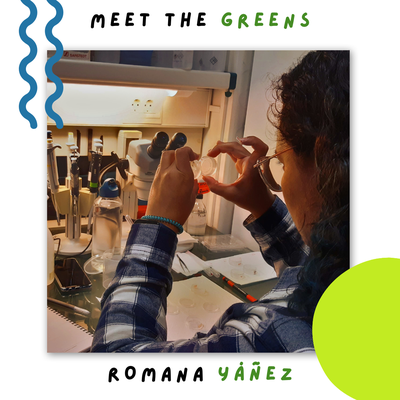Meet the GREENs | Romana Yáñez
“Do you know where you are?” asks Romana as she draws a Y-shape on the whiteboard. “The IGC is built like an antibody, so you are here,” she points at one of the light chains that make up this IGC-antibody building.
Romana Yáñez is a PhD student at Paula Duque’s lab at IGC and a member of the GREEN-IT Research Unit. At the Plant Molecular Biology lab, the researchers mainly focus on understanding how plants deal with environmental stress. However, fundamental biology has not always been the focal point of Romana’s work.
“My academic journey has been a bit all over the place”, says Romana. “I started school in Cuba and finished in South Africa. I always liked to understand the world surrounding me, especially the living world. That led me to opt to go to university to pursue Molecular and Cell Biology. I did the first year of my degree at Stellenbosch University, in Cape Town, but changed after that to the University of Cape Town, as I preferred their environment a lot more. There I did my Master’s as well, in Plant Biotechnology, more specifically in biopharming. So, I was making vaccines in plants”.
“What I am doing now is very different“, states Romana “That was more applied biology, and here it is fundamental biology”. Romana is currently developing her work on potential non-canonical functions of plant splicing factors.
At the IGC, the lab of Paula Duque, which houses Romana and 7 other researchers, looks to characterize SR proteins – splicing factors – that are highly involved in the regulation of a process known as alternative splicing, which allows genes to make different proteins from the same mRNA. SR proteins are involved in different aspects of plant growth and development as well as in responses to environmental cues. Romana is now looking to see if there is another layer of gene expression regulation regarding these characterized proteins that occurs not only at the DNA or RNA level, inside of the nucleus, but at other levels. For this, she uses several different techniques in the lab, including confocal microscopy and ribosome profiling, that take her all throughout IGC and ITQB.
“Because the techniques I use for my project are all over the place, I am rarely at my bench,” confides Romana. A normal day in the lab will have Romana spend her mornings planning her experiments and preparing samples, leaving the afternoons for imaging the plants at the advanced imaging facility on the other side of the IGC or running the gradients in the ultracentrifuge at the ITQB, for example. “I am not a morning person, so I leave the heavy experiments for the afternoons,” Romana admits.
The lab is not all that occupies her PhD student life. Romana has nursed a deep love for illustration throughout her career. “I love drawing. I love putting complex ideas into simple images and simple shapes, and communicating through visuals,” explains Romana. The whiteboard in the conference room where Romana sits is full of drawings and schemes, much in the same way as her notebook from conferences and seminars. “If I am taking notes, most of those notes are illustrated,” states Romana, “I always say I don't understand something if I cannot draw it”.
Romana is halfway through her PhD and, as for the future, she likes to keep it open but knows that science communication will definitely be a part of it. “It is still early to decide what I will do after my PhD, but something that I really want to continue doing is science communication and illustration. When I finish my PhD I will be very well trained in science, and so I would love to combine those two things. I want to communicate hard topics in simple ways,” confides Romana.
For now, Romana stays focused on her plant samples and keeps on with her research.
To see Romana at work, check our Instagram!




